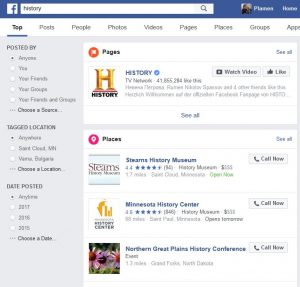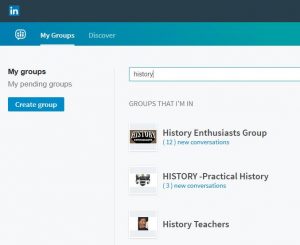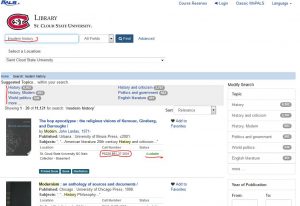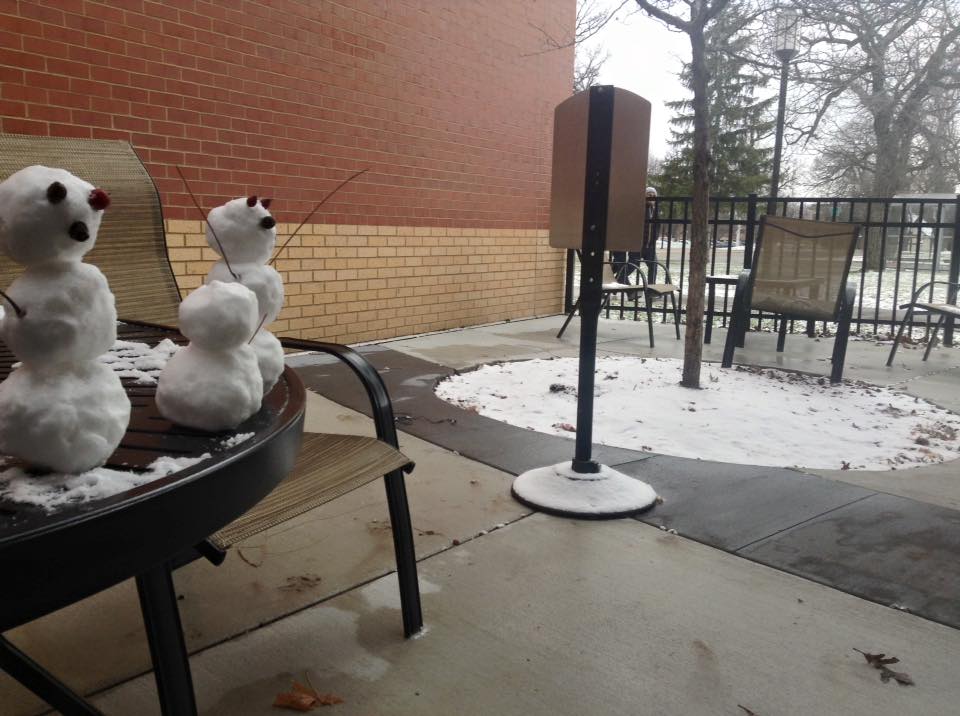Oct
2018
Digital Literacy for St. Cloud State University
Jeffrey Sachs was once a magnet for criticism over the market-based shock therapy he prescribed for Eastern Europe. Today, he is calling for the United States to move more in the direction of a social democracy, with Germany as a role model.
The man who was once the godfather of the birth of capitalism in Eastern Europe is now working to curb the influence of the free market in the United States. Sachs even endorsed self-proclaimed “socialist” Bernie Sanders for president.
+++++++++++++++++
more on history in this IMS blog
https://blog.stcloudstate.edu/ims?s=history
most on the Cold War in this IMS blog
https://blog.stcloudstate.edu/ims?s=cold+war
Internet watchdog demands explanation after Ramzan Kadyrov claimed Facebook also suspended him without explanation
Kadyrov has accused the US government of pressuring the social networks to disable his accounts, which he said were blocked on Saturday without explanation. The US imposed travel and financial sanctions on Kadyrov last week over numerous allegations of human rights abuses.
The former rebel fighter, who is now loyal to the Russian president, Vladimir Putin, is a fan of social media, particularly Instagram, which he has used in recent years to make barely veiled death threats against Kremlin critics.
Leonid Levin, the head of the Russian parliament’s information technologies and communications committee, suggested the move by Facebook and Instagram was an attack on freedom of speech.
Dzhambulat Umarov, the Chechen press and information minister, described the blocking of Kadyrov’s accounts as a “vile” cyber-attack by the US.
Neither Instagram nor Facebook had commented at the time of publication.
In 2015, Kadyrov urged Chechen men not to let their wives use the WhatsApp messaging service after an online outcry over the forced marriage of a 17-year-old Chechen to a 47-year-old police chief. “Do not write such things. Men, take your women out of WhatsApp,” he said.
++++++++++
more on fake news in this IMS blog
https://blog.stcloudstate.edu/ims?s=fake+news
Plamen Miltenoff – http://web.stcloudstate.edu/pmiltenoff/faculty/
with Heather Abrahamson, Becker High School Social Studies, 763-261-4501 (Ext. 3507)
9:50-11:15; 11:20-11:45; 12:20-1:20 |
link to this blog entry: https://blog.stcloudstate.edu/ims/2017/05/01/history-becker/
short link – http://bit.ly/histbecker
+++++++++++++++++++++
list of web sites with images for the students’ projects:
https://www.ushmm.org/collections/the-museums-collections/about/photo-archives
http://www.jewishvirtuallibrary.org/holocaust-photographs
https://go.fold3.com/holocaust_records/
https://www.wienerlibrary.co.uk/Photographs
https://www.thoughtco.com/large-collection-of-holocaust-pictures-1779703
http://www.yadvashem.org/yv/en/holocaust/resource_center/item.asp?gate=4-2
http://www.gettyimages.com/photos/cold-war
http://www.coldwar.org/museum/photo_gallery.asp
http://www.cnn.com/2014/03/04/world/gallery/cold-war-history/
http://time.com/3879870/berlin-wall-photos-early-days-cold-war-symbol/
http://digitalarchive.wilsoncenter.org/theme/cold-war-history
http://archive.millercenter.org/academic/dgs/primaryresources/cold_war
http://www.gettyimages.com/editorialimages/archival
https://www.archives.gov/research/alic/reference/photography.html
+++++++++++++++++++++
Defining my interests. Narrowing a topic. How do I collect information? How do I search for information?
| How do we search for “serious” information? | |
|
|
|
|
https://www.google.com/; https://scholar.google.com/ (3 min); http://academic.research.microsoft.com/; http://www.dialog.com/; http://www.quetzal-search.info; http://www.arXiv.org; http://www.journalogy.com/ |
|
http://digg.com/, https://www.reddit.com/, https://www.quora.com/ StackExchange http://stackexchange.com/Kngine.com; AskScience https://www.reddit.com/r/askscience/, , and similar, https://medium.com/ (5 min) |
| YouTube, SlideShare https://www.slideshare.net/ and similar | https://www.slideshare.net/search/slideshow?searchfrom=header&q=modern+history |
|
(10 min) |
| Wikipedia | https://en.wikipedia.org/wiki/Modern_history |
| blogs, listservs | http://www.bestcollegesonline.com/blog/100-awesome-blogs-for-history-junkies/ |
 |
|
 |
|
| LinkedIn Groups https://www.linkedin.com/groups/my-groups |  |
| team work | using your social media accounts (e.g. Facebook, Twitter), search for information related to your topic of interest (5 min) |
|
|
|
|
https://www.semanticscholar.org/ |
|
(20 min) |
| every university library has subject guides for different disciplines. here are the ones from SCSU http://stcloud.lib.mnscu.edu/subjects/guide.php?subject=HIST-WOR | Kahoot game (5 min) |
| basic electronic (library) search information and strategies. Library research services (5 min)
using the library database, do a search on a topic of your interest. compare the returns on your search. make an attempt to refine the search. retrieve the following information about the book of interest: is it relevant to your topic (check the subjects); is it timely (check the published date); is it available |
  |
| Strategies for conducting advanced searches (setting up filters and search criteria) | |
| Articles and databases (10 min) |     |
| Kahoot competition | use your smart phones to find the best researcher among you https://play.kahoot.it/#/k/c376c27a-d39a-4825-8541-1c1ae728e1bc https://play.kahoot.it/#/k/5e6d126f-be4d-47d0-9b6e-dfc3f2c90e61 https://play.kahoot.it/#/k/89706729-3663-4ec3-a351-173bf1bf4ed7history: https://play.kahoot.it/#/k/7510e6d8-170f-4c0c-b7bd-6d7dd60c3f6e |
| Reference and Facts | |
| Streaming and Video | http://www.stcloudstate.edu/library/research/video.aspx |
| Journal Title and Citation Finder | |
| shall more info be needed and or “proper” session with a reference librarian be requested | http://stcloud.lib.mnscu.edu/subjects/guide.php?subject=EDAD-D |
| Institutional Repository | http://repository.stcloudstate.edu/ |
|
|
| Academic.com and ResearchGate | |
|
|
|
|
http://bit.ly/360lib and http://bit.ly/360lib2; http://bit.ly/VRlib (15 min) |
|
|
|
|
|
| Refworks | https://www.refworks.com/refworks2/default.aspx?r=authentication::init& |
| Zotero, Mendeley, Endnote | |
| Fast and easy bibliographic tools: | https://blog.stcloudstate.edu/ims/2013/12/06/bibliographic-tools-fast-and-easy/ |
| Primary and secondary sources video | |
++++++++++++++++++
more on history in this IMS blog
https://blog.stcloudstate.edu/ims?s=history
The volcano that caused famines in ancient Rome? It was in Alaska
https://arstechnica.com/science/2020/06/an-alaskan-volcano-may-have-hastened-the-fall-of-the-roman-republic/
+++++++++++++++++++++
https://www.washingtonpost.com/politics/2019/12/17/chinas-education-system-produces-stellar-test-scores-so-why-do-students-head-abroad-each-year-study/
Education scholars have already critiqued PISA as a valid global measure of education quality — but analysts also are skeptical about the selective participation of Chinese students from wealthier schools.
Second, Chinese students, on average, study 55 hours a week — also No. 1 among PISA-participating countries. This was about 20 hours more than students in Finland, the country that PISA declared to have the highest learning efficiency, or reading-test-score points per hour spent studying.
But PISA analysis also revealed that Chinese students are among the least satisfied with their lives.
Students look overseas for a more well-rounded education
Their top destination of choice, by far, is the United States. The 1.1 million or so foreign students in the United States in 2018 included 369,500 Chinese college students
hostility in U.S.-China relations could dampen the appeal of a U.S. education. Britain, in fact, recorded a 30 percent surge in Chinese applicants in 2019, challenging the U.S. global dominance in higher education.
++++++++++++++++++++++++++++
https://www.edweek.org/ew/articles/2019/12/03/us-students-gain-ground-against-global-peers.html
Immigrant students, who made up 23 percent of all U.S. students taking PISA, performed significantly better compared to their native-born peers in the United States than they did on average throughout the OECD countries.
The survey found that 15-year-old students from Beijing, Shanghai, and the eastern provinces of Jiangsu and Zhejiang ranked top for all three core subjects, achieving the highest level 4 rating.
Students from the United States were ranked level 3 for reading and science, and level 2 for math, while teens from Britain scored a level 3 ranking in all three categories.
++++++++++++++++
Andreas Schelicher, director of education and skills at the OECD—the Paris-based organization behind PISA wrote that “students who disagreed or strongly disagreed with the statement ‘Your intelligence is something about you that you can’t change very much’ scored 32 points higher in reading than students who agreed or strongly agreed.”
Those results are similar to recent findings published by Carol Dweck, a Stanford education professor who is often credited with making growth mindset a mainstream concept.
“Growth mindset is a very important thing that makes us active learners, and makes us invest in our personal education,” Schleicher states. “If learning isn’t based on effort and intelligence is predetermined, why would anyone bother?”
It’s “absolutely fascinating” to see the relationship between teachers’ enthusiasm, students’ social-emotional wellbeing and their learning outcomes, Schleicher notes. As one example, he noted in his summary report that “in most countries and economies, students scored higher in reading when they perceived their teachers as more enthusiastic, especially when they said their teachers were interested in the subject.”
In other words, happy teachers lead to better results. That’s hardly a surprising revelation, says Scheleicher. But professional development support is one thing that can sometimes be overlooked by policymakers when so much of the focus is on test scores.
+++++++++++++++++
https://nces.ed.gov/surveys/pisa/
+++++++++++
America’s education system is not bad. It is above average, in fact. https://t.co/O8msa0ZT8l
— Noah Smith 🐇 (@Noahpinion) December 9, 2019
+++++++++++
more on Estonia in this IMS blog
https://blog.stcloudstate.edu/ims?s=estonia
Katrina Schwartz Published on
Teachers are turning to the practice as a simple way to restore calm to the classroom, help students find some quiet space, and build self-regulation skills. Some teachers say their personal mindfulness practicehas helped them respond more calmly to students and helps them keep perspective.
“This isn’t about calming down,” said Sam Himelstein, a clinical psychologist, trainer and author who has spent most of his career working with incarcerated youth. “Calming down is great and it is a skill that youth can get better at. But if we’re talking about mindfulness, at its core, we are just talking about being present with whatever it is.”
Larry Rosenberg the dog-mind versus the lion-mind.
Reacting with the mind of a lion allows a person to say, “I’m angry right now,” and that little bit of metacognitive space between the person and the thought allows them to choose how to respond.
TRAUMA SENSITIVE MINDFULNESS
Guidelines for teachers using mindfulness:
SELF CARE
Cultivating a trauma-informed classroom is much harder when educators themselves are burnt out. Building relationships, not reacting defensively to student behavior and taking time to listen to students can feel nearly impossible if the adult is barely making it through the day.
several categories of self-care, according to Himelstein:
Veteran teacher Nancy Bailey warns about the danger that technology poses to child development.
Technology is a helpful tool, but it won’t provide that sense of stability. It’s a cold machine. School districts push technology over teachers. They don’t stop to think about what it will mean to children and their development.
the idea that instruction should be disrupted using technology is putting students and the country at risk. It destroys the public school curriculum that has managed to educate the masses for decades.
Early childhood teachers express concern that tech is invading preschool education. We know that free play is the heart of learning.
But programs, like Waterford Early Learning, advertise online instruction including assessment for K-2. Their Upstart program advertises, At-home, online kindergarten readiness program that gives 4- and 5-year-old children early reading, math, and science lessons.
++++++++++++++++++
more on technology in education in this IMS blog
https://blog.stcloudstate.edu/ims?s=technology+education
more on Clay Christensen disruption theory in this IMS blog:
https://blog.stcloudstate.edu/ims/2016/12/19/clayton-christensen-disruption-theory/
http://wisdomofcrowds.blogspot.com/2009/12/introduction-part-v.html
he assembled a team of men with a wide range of knowledge, including mathematicians, submarine specialists, and salvage men. Instead of asking them to consult with each other to come up with an answer, he asked each of them to offer his best guess about how likely each of the scenarios was. To keep things interesting, the guesses were in the form of wagers, with bottles of Chivas Regal as prizes.
Needless to say no one of these pieces of information could tell Craven where the Scorpion was. But Craven believed that if he put all the answers together, building a composite picture of how the Scorpion died, he’d end up with a pretty good idea of where it was.
https://en.wikipedia.org/wiki/John_P._Craven
The Mad Genius from the Bottom of the Sea
CARL HOFFMAN DATE OF PUBLICATION: 06.01.05.
https://www.wired.com/2005/06/craven/
Craven is hard to keep up with. His mind darts from why the Navy should make subs out of glass to the sad end of his long telephone friendship with the late Marlon Brando to the remarkable prodigiousness of his small experimental Hawaiian vineyard.
Craven’s system exploits the dramatic temperature difference between ocean water below 3,000 feet – perpetually just above freezing – and the much warmer water and air above it. That temperature gap can be harnessed to create a nearly unlimited supply of energy. Although the scientific concepts behind cold-water energy have been around for decades, Craven made them real when he founded the state-funded Natural Energy Laboratory of Hawaii in 1974 on Keahole Point, near Kona.
If you feel cold and need a warm place to hide, please consider InforMedia Services: we can work with you on technology, while getting warmer.. 🙂
